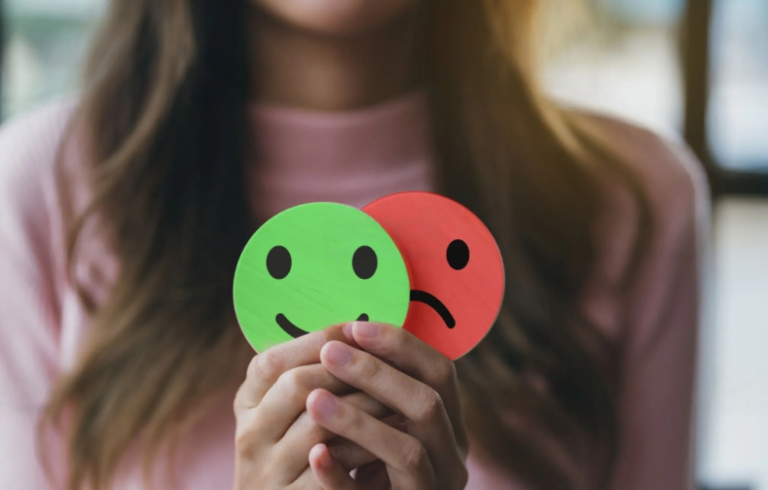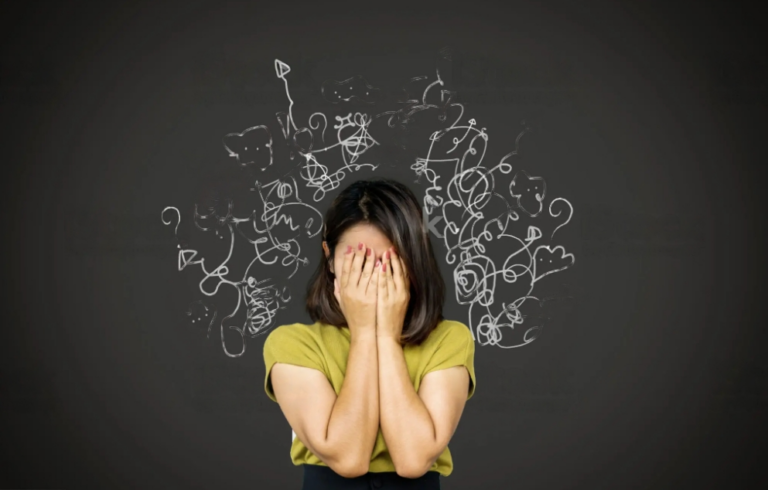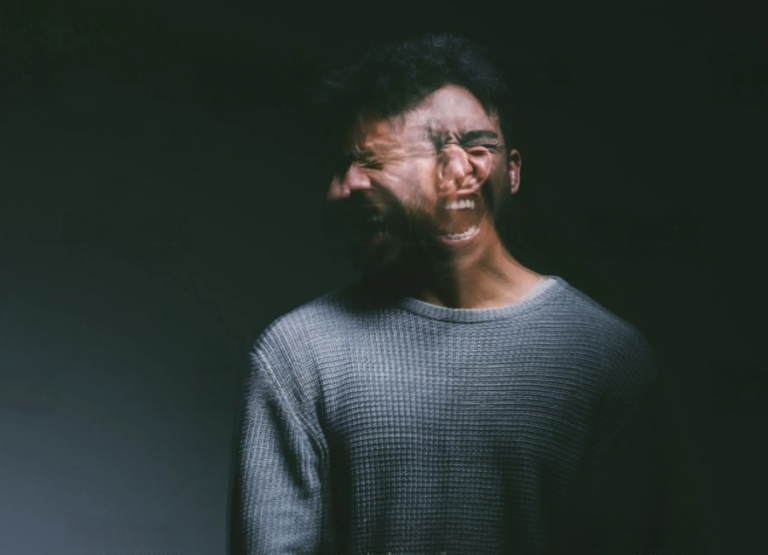Breaking Down the Different Types of Anxiety Disorders
Breaking Down the Different Types of Anxiety Disorders
What are the types of Anxiety?
Anxiety is a common human experience characterized by fear, constant worry, and unease. It is a natural response to stress or perceived threats, preparing us to take action and stay safe. However, when Anxiety becomes persistent, excessive, and interferes with daily functioning, it may indicate the presence of an anxiety disorder.
Anxiety disorders encompass a range of conditions, each with unique features and symptoms. Therefore, understanding the different types of anxiety disorders is crucial to provide appropriate support and treatment. Generalized anxiety disorder (GAD), panic disorder, social anxiety disorder (SAD), specific phobias, and separation anxiety disorder are among the prevalent types of anxiety disorders.
Generalized anxiety disorder includes excessive worry and fears about different areas of life, often with physical symptoms like restlessness, irritability, and trouble focusing. Panic disorder involves repeated panic attacks, sudden episodes of extreme fear and physical discomfort. Social anxiety disorder is characterized by an intense fear of social situations and a strong urge to avoid scrutiny or embarrassment. Lastly, specific phobias are irrational fears and avoidance of specific objects or situations, like heights, spiders, or flying
Anxiety is a common experience, but when it becomes chronic and disrupts daily life, it may indicate an anxiety disorder. Understanding the different types of anxiety disorders is vital for recognizing, diagnosing, and providing appropriate support and treatment. By fostering awareness and creating supportive environments, we can help individuals with anxiety disorders lead fulfilling lives and break free from the grip of Anxiety.
Generalized Anxiety Disorder (GAD)
Generalized Anxiety Disorder (GAD) is a prevalent anxiety disorder that affects numerous individuals worldwide. Therefore, it is vital to shed light on this mental health condition, its symptoms, causes, and available treatment options. This article aims to understand GAD and its impact on individuals’ well-being comprehensively.
Generalized Anxiety Disorder is characterized by persistent and excessive worry and Anxiety about everyday life events and situations. People with GAD often experience heightened anxiety symptoms beyond what is considered typical. This chronic condition can significantly impact their daily functioning and overall quality of life.
Generalized Anxiety Disorder Symptoms
People with anxiety disorders may exhibit various symptoms, including:
- Constant feelings of worry and apprehension.
- Restlessness and difficulty concentrating.
- Fatigue and irritability.
- Muscle tension and aches.
- Insomnia and challenges in both initiating and maintaining sleep
- Experiencing panic attacks, which are sudden episodes of intense fear or discomfort.
Causes of Generalized Anxiety Disorder
While the exact causes of GAD are not fully understood, several factors contribute to its development:
- Genetic predisposition and family history of anxiety disorders.
- Chemical imbalances in the brain affect neurotransmitters involved in regulating mood and Anxiety.
- Environmental risk factors, such as traumatic experiences or chronic stress.
- Cognitive and behavioral patterns, including excessive worry and negative thinking.
Treatment Options for Generalized Anxiety Disorder:
Effective treatment approaches for GAD include:
- Therapy: Cognitive-Behavioral Therapy (CBT) helps individuals identify and modify negative thought patterns and behaviours associated with Anxiety.
- Medications: Anti-anxiety medications or antidepressants may be prescribed to manage symptoms. Consultation with a healthcare professional is essential for proper evaluation and prescription.
- Lifestyle Modifications: Regular exercise, healthy eating, adequate sleep, and stress management techniques can positively treat anxiety.
- Supportive Interventions: Building a solid support network and seeking support from friends, family, or support groups can provide emotional assistance and understanding.
Generalized Anxiety Disorder is a complex mental health condition affecting many individuals worldwide. Understanding the symptoms, causes, and treatment options is crucial in supporting and promoting mental well-being for those with GAD. By raising awareness about anxiety disorders, such as GAD, we can work towards a society that fosters empathy, acceptance, and adequate support for individuals managing various types of Anxiety.
Panic Disorder
Recurrent and unpredictable panic attacks are defining features of panic disorder, an anxiety disorder. It is a mental disorder that affects millions of individuals worldwide. Panic attacks are intense episodes of fear and anxiety that suddenly peak within a few minutes. During a panic attack, individuals may experience physical symptoms such as a rapid heartbeat, sweating, trembling, shortness of breath, chest pain, and a sense of impending doom.
Panic disorder can significantly impact a person’s daily life, leading to difficulties in various areas, including work, relationships, and overall well-being. Other mental disorders, such as Anxiety and depression often accompany it. Separation anxiety disorder is one example of a specific type of anxiety disorder that can occur in children.
Thankfully, panic disorder can be treated effectively. Mental health experts like therapists and psychiatrists can offer support and advice for symptom management. Treatment choices may involve therapy, medication, and lifestyle adjustments. Moreover, adopting healthy coping methods like relaxation techniques, regular exercise, and sufficient sleep can also be vital in handling panic disorder and enhancing overall mental health.
Symptoms of Panic Disorder
Common symptoms associated with panic disorder include:
- Sudden and overwhelming feelings of fear or impending doom.
- Rapid heartbeat, chest pain, or palpitations.
- Shortness of breath or a feeling of choking.
- Trembling or shaking.
- Sweating and chills or hot flashes.
- Nausea or stomach discomfort.
- Dizziness or lightheadedness.
- Fear of losing control or going crazy.
- Fear of dying.
Causes of Panic Disorder
The exact causes of panic disorder are not fully understood, but several factors contribute to its development:
- Genetic predisposition and family history of Anxiety or mental disorders.
- Chemical imbalances in the brain involve neurotransmitters such as serotonin and norepinephrine.
- Major life transitions or stressful events.
- History of childhood trauma or abuse.
- Certain medical conditions or substance abuse.
Treatment Options for Panic Disorder
Effective treatment approaches for panic disorder include:
- Psychotherapy:
Cognitive-Behavioral Therapy (CBT) helps individuals identify and challenge distorted thoughts and behaviors associated with panic attacks.
- Medications:
Antidepressants or anti-anxiety medications may be prescribed to reduce the frequency and severity of panic attacks.
- Relaxation Techniques:
Deep breathing exercises, mindfulness meditation, and progressive muscle relaxation can help manage anxiety symptoms.
- Lifestyle Modifications:
Regular exercise, healthy eating, and avoiding substances that trigger panic attacks, such as caffeine or alcohol, are essential.
- Support Network:
Seeking support from loved ones and joining support groups can provide emotional assistance during recovery.
Panic attacks greatly affect a person’s life, but with proper care and assistance, symptoms can be controlled and relieved. Seeking help from mental health professionals is important in finding the right treatment for each individual. Moreover, increasing awareness and understanding of panic disorder can create a supportive atmosphere that enhances mental well-being. Together, we can help individuals with panic disorder regain control and find an effective treatment for other anxiety disorders.
Social Anxiety Disorder
Social anxiety disorder, or social phobia, is marked by extreme fear of social or performance situations. It’s a common mental health issue that affects how people interact socially and can have a big impact on their everyday lives. Those with social anxiety often feel overly self-conscious and dread being judged or humiliated in social settings.
The Anxiety and Depression Association of America recommends talk therapy as an effective treatment for social anxiety disorder. Talk therapy, such as cognitive-behavioural therapy (CBT), helps individuals identify and challenge negative thoughts and beliefs contributing to their anxiety symptoms. In some cases, medication may also be prescribed to alleviate symptoms and improve daily functioning.
Genetic and environmental factors play a role in developing social anxiety disorder. Traumatic experiences, a family history of anxiety disorders, and an imbalance in brain chemicals are potential contributors. Exposure therapy focuses on gradually exposing individuals to social or performance situations to reduce Anxiety and build confidence.
Symptoms of Social Anxiety Disorder
Individuals with social anxiety disorder may experience the following symptoms:
- Excessive self-consciousness and fear of embarrassment or humiliation in social settings.
- Avoidance of social situations or intense Anxiety when facing them.
- Physical symptoms like rapid heartbeat, trembling, sweating, or nausea.
- Negative self-perception and fear of judgment or scrutiny by others.
- Difficulty initiating or maintaining conversations, leading to feelings of isolation.
Causes of Social Anxiety Disorder
The development of social anxiety disorder can be influenced by multiple factors, including:
- Genetic predisposition and family history of anxiety disorders.
- Traumatic experiences or negative social interactions during childhood or adolescence.
- The overactive amygdala is the part of the brain responsible for processing emotions and fear responses.
- Learned behaviors or conditioning through past social experiences.
Treatment Options for Social Anxiety Disorder
Effective treatment approaches for social anxiety disorder include:
- Cognitive-Behavioral Therapy (CBT) helps individuals identify and challenge negative thought patterns and develop healthier coping mechanisms.
- Exposure Therapy: Gradual exposure to feared social situations in a controlled and supportive environment helps reduce anxiety responses.
- Medications: Antidepressants or anti-anxiety medications may be prescribed to manage symptoms, particularly in severe cases.
- Support Groups: Joining support groups or seeking social support can provide a sense of understanding and encouragement.
Social anxiety disorder dramatically affects one’s personal and work life, but with proper care and support, individuals can effectively handle symptoms and enhance well-being. Recognizing signs, understanding causes, and exploring treatments are vital to overcoming social anxiety disorder. In addition, seeking guidance from mental health experts offers tailored support, leading to a more fulfilling and confident social life.
Obsessive-Compulsive Disorder
Obsessive-Compulsive Disorder (OCD) is a mental health condition characterized by persistent and unwanted thoughts, known as obsessions, that lead to repetitive behaviors, referred to as compulsions. These obsessions and compulsions can significantly impact an individual’s daily life, causing distress and interfering with their ability to function.
Anxiety symptoms often worsen in individuals with OCD, as the obsessions and compulsions are driven by fear and Anxiety. The American Psychiatric Association’s publication, the Diagnostic and Statistical Manual of Mental Disorders (DSM-5), offers detailed guidelines for diagnosing anxiety disorders, including obsessive-compulsive disorder (OCD).
Symptoms of Obsessive-Compulsive Disorder
Intrusive thoughts or fears that create extreme fear or Anxiety.
- Repetitive and ritualistic behaviors performed to alleviate Anxiety or prevent perceived harm.
- Excessive cleaning, checking, or counting rituals.
- Fear of contamination, symmetry, or orderliness.
- Inability to control or stop the obsessive thoughts and compulsive behaviors.
Causes of OCD
The exact causes of OCD are not fully understood, but several factors contribute to its development:
- Genetic predisposition and family history of OCD or other mental health conditions.
- Neurological abnormalities or imbalances in brain chemistry.
- Experiences during childhood, such as traumatic events or significant life stressors, can have an impact on individuals’ mental and emotional well-being.
Treatment Options for OCD
Effective treatment approaches for OCD include:
- Cognitive-Behavioral Therapy (CBT):
This therapy helps individuals identify and challenge irrational thoughts, and develop healthier coping strategies.
- Exposure and Response Prevention (ERP):
Gradual exposure to anxiety-inducing situations and refraining from engaging in compulsive behaviors, helps reduce OCD symptoms.
- Medications:
Selective serotonin reuptake inhibitors (SSRIs) may be prescribed to manage OCD symptoms, in combination with therapy.
- Support from Mental Health Professionals:
Seeking guidance and support from qualified mental health professionals is vital in managing OCD effectively.
OCD greatly affects daily life, but individuals can manage symptoms and improve their well-being with proper care and help. Recognizing symptoms, understanding causes, and exploring treatments are crucial for addressing OCD. Additionally, getting support from mental health professionals provides personalized guidance and aid, leading to better life quality and improved mental well-being. Although a complete cure for anxiety disorders is not certain, effective treatment can greatly lessen symptoms and enhance daily functioning.
Post-Traumatic Stress Disorder
Post-Traumatic Stress Disorder (PTSD) is a psychological disorder that may occur in individuals who have been exposed to or witnessed a distressing incident, leading to significant emotional and mental distress. It is characterized by a range of symptoms that persist for an extended period after the traumatic event.
PTSD falls within the category of anxiety disorders and can significantly impact a person’s daily life. Symptoms may include intrusive memories or flashbacks of the traumatic event, avoidance of reminders or triggers associated with the trauma, negative changes in mood and thinking patterns, and heightened reactivity to stimuli.
It’s crucial for people with PTSD or any mental illness to seek help from mental health experts. Organizations like the National Institute of Mental Health offer resources to aid in stress management, understanding PTSD, and finding suitable treatments. With proper support and interventions, individuals with PTSD can effectively manage symptoms and work toward recovery
Symptoms of Post-Traumatic Stress Disorder
Common symptoms associated with PTSD include:
- Vivid recollections or sudden flashbacks of the distressing incident intrude upon one’s thoughts or awareness.
- Nightmares or distressing dreams related to the trauma.
- Avoidance of reminders or triggers associated with the trauma.
- Hyperarousal, including heightened Anxiety, irritability, and exaggerated startle response.
- Adverse changes in thoughts and mood include persistent negative beliefs, feelings of detachment, or a sense of hopelessness.
Causes of PTSD
PTSD can be caused by various traumatic events, including:
- Combat experiences or military service.
- Physical or sexual assault.
- Natural disasters.
- Serious accidents or injuries.
- Witnessing or experiencing violence.
Treatment Options for PTSD
Practical treatment approaches for PTSD include:
- Psychotherapy:
Trauma-focused therapy, such as Cognitive Processing Therapy (CPT) or Eye Movement Desensitization and Reprocessing (EMDR), helps individuals process the traumatic event and develop coping strategies.
- Medications:
Antidepressants or anti-anxiety medications may be prescribed to manage PTSD symptoms and associated Anxiety.
- Supportive Interventions:
Building a solid support network, participating in support groups, and practicing self-care can contribute to healing.
- Sleep Management:
Addressing sleep disturbances through good sleep hygiene practices and, if necessary, medication interventions can help alleviate associated symptoms.
Post-Traumatic Stress Disorder (PTSD) is a complicated condition that greatly affects well-being. Recognizing symptoms, understanding causes, and exploring treatments are crucial in addressing PTSD and promoting recovery. Seeking professional help and creating a personalized treatment plan can greatly enhance the quality of life, providing tools for healing and resilience. With proper support and treatment, individuals can manage symptoms, reduce Anxiety, and regain control of their lives.
Phobias
Phobias are strong and lasting fears of certain things, situations, or activities. Social anxiety disorder, once called social phobia, is a common type of phobia where people feel extreme fear and self-consciousness in social or performance situations. Specific phobias involve intense and irrational fear of things like spiders, heights, or flying.
Phobias are different from normal fears because they often cause an exaggerated and unreasonable reaction to a perceived threat that may not be actually dangerous. The Constant fear can disrupt daily life, causing people to avoid situations or things that trigger their specific phobia.
Fortunately, effective treatments can ease symptoms and help individuals regain control over their fears. Treatments for phobias often include cognitive-behavioral therapy (CBT), exposure therapy, and relaxation methods. By addressing the underlying anxiety and gradually exposing individuals to their feared things or situations in a controlled way, it is possible to manage and treat anxiety disorders like phobias
Symptoms of Phobias
Symptoms associated with phobias can vary but commonly include:
- Intense and irrational fear or Anxiety when encountering the phobic stimulus.
- Avoidance of the feared object, situation, or activity.
- Rapid heartbeat, shortness of breath, trembling, or sweating in response to the phobic trigger.
- Feeling overwhelmed or a loss of control when facing fear.
Causes of Phobias:
The development of phobias can be influenced by various factors, including:
- Traumatic experiences or witnessing traumatic events.
- Learned behaviors from early childhood experiences.
- Genetic predisposition and family history of phobias or mental illnesses.
- Cultural or societal influences.
Treatment Options for Phobias
Effective treatment approaches for phobias include:
- Cognitive-Behavioral Therapy (CBT):
This therapy helps individuals identify and challenge irrational thoughts and beliefs associated with the phobia.
- Exposure Therapy:
Gradual and controlled exposure to the phobic stimulus and relaxation techniques can help reduce anxiety responses.
- Medications:
In some cases, medications like anti-anxiety drugs or beta-blockers may be prescribed to manage symptoms during treatment.
- Supportive Interventions:
Building a strong support network and seeking guidance from mental health professionals can provide essential encouragement and assistance.
Phobias greatly impact daily life and well-being, but with proper care and support, fear can be managed and controlled. Recognizing symptoms, understanding causes, and exploring treatments are crucial in addressing phobias. Seeking help from mental health experts provides guidance, support, and tools to overcome phobias and regain control. With the right treatment and support, individuals can effectively manage fears and regain confidence and freedom
Conclusion
Understanding the different types of anxiety is crucial in recognizing and addressing these debilitating anxiety disorders. Whether it’s generalized, PTSD, OCD, social anxiety disorder or specific phobias, individuals experience overwhelming fear that can disrupt their daily lives. Identifying the symptoms and causes of phobias allows for targeted treatment options, such as therapy or medications, to alleviate Anxiety and improve well-being. By raising awareness and providing support, we can create a more empathetic society that helps individuals overcome their fears and lead fulfilling lives free from the constraints of phobias.
FAQs
- What anxiety feels like?
Anxiety can feel like a constant state of fear, worry, and unease. It may manifest as physical symptoms such as a racing heart, shortness of breath, and restlessness
- What does anxiety look like?
Anxiety can manifest differently in individuals. It may be visible through physical signs like fidgeting, trembling, or avoiding eye contact
- How to recognize anxiety disorders in yourself and others?
Recognizing anxiety disorders involves identifying persistent and excessive worry or fear that significantly disrupts daily life.
- Is anxiety caused by a chemical imbalance?
While the exact cause of anxiety is complex and varies for each individual, some cases may involve chemical imbalances in the brain
- What are the 5 types of anxiety disorders?
The five major common types of anxiety disorders are generalized anxiety disorder (GAD), panic disorder, social anxiety disorder (SAD), specific phobias, and obsessive-compulsive disorder (OCD)
References
American Psychiatric Association. (2020, November). What Is PTSD? Psychiatry.org; American Psychiatric Association. https://www.psychiatry.org/patients-families/ptsd/what-is-ptsd
Anxiety Disorders. (2023, April). National Institute of Mental Health (NIMH). https://www.nimh.nih.gov/health/topics/anxiety-disorders#:~:text=There%20are%20several%20types%20of
Munir, S., & Takov, V. (2022, January 9). Generalized Anxiety Disorder. Nih.gov; StatPearls Publishing. https://www.ncbi.nlm.nih.gov/books/NBK441870/#:~:text=Generalized%20anxiety%20disorder%20is%20a
Wikipedia Contributors. (2019, August 29). Social anxiety disorder. Wikipedia; Wikimedia Foundation. https://en.wikipedia.org/wiki/Social_anxiety_disorder
Harvard Health Publishing. (2018, December 18). Phobia – Harvard Health. Harvard Health; Harvard Health. https://www.health.harvard.edu/a_to_z/phobia-a-to-z






